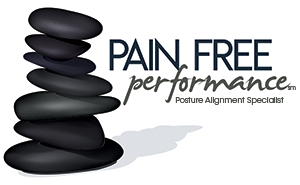WHAT ABOUT PAIN?
Most of us have a perverse relationship with pain – any kind of pain – back pain, shoulder pain, knee pain, or neck pain. If we have it, we don’t want it and we do any number of things to get it to go away – prescription or non-prescription drugs, lifts, braces, wraps, and even surgery – all because we don’t understand pain.
If we can look at pain for what it is – the body’s message system – then we can listen to what message the body is sending us. So what is the quality of the pain you feel? Is it the sharp, knifelike, electric white-hot kind? Oh yeah, you have to stop whatever your doing and find a new position and placement. That kind of pain is the fire alarm so to speak. But if it’s not that sharp electric kind of pain, if we can look it in the eye, we can learn a great deal about our bodies. Is it there all the time or can you adjust your position and see it increase or decrease? Does it come in the morning upon waking or later when you’re tired? Does it occur while moving and doing things or when you’re more static? What brings this pain on and can you get it to decrease?
A common mistake we make around pain is to use it as the only measure that we’re doing better when it is only one way of measuring how we’re doing. Typically, pain is the last thing to change so it’s not the best measure, just the one we want to see the most! The pain will go away when the body is able to maintain a more equal, bilateral, symmetrical position. That means you have to start developing your “kinesthetic awareness” – sensing, feeling our bodies from the inside out – which is not something we are encouraged to do in our culture!
As a posture exercise therapist, if I can get you to think about something other than your pain, we’ve made a giant step forward toward getting you better. To practice kinesthetic awareness, ask yourself these questions: Where do you feel the weight in your feet? Is the weight equal left to right or different? Is it more in the heels or balls of the feet? Is it more toward the arch or little toes? If you stand with your toes together and heels apart with your legs really straight does that change anything or can you feel what changed? If you do several exercises and walk around again can you feel what has changed? Can you feel the position of your shoulders in relation to the rest of you? Is your head in line with your shoulders and spine or is it more forward? Can you feel your body with your body (hence, the kinesthetic part) or do you have to look in a mirror to tell (more visual)? The imbalances you discover and feel in your body can be corrected. The pain you feel from the imbalance can be alleviated. It’s what we do at Pain Free Performance.
So, while pain is an important sensation and a clue to misalignment it should not frighten us, but put us on the path to understanding the message. Acknowledging the pain and correcting the muscle imbalances will stop the pain. Listening to our pain rather than automatically stopping it with medication or procedures will help us make the necessary changes to live pain free. At Pain Free Performance we will give you the tools to do just that.
